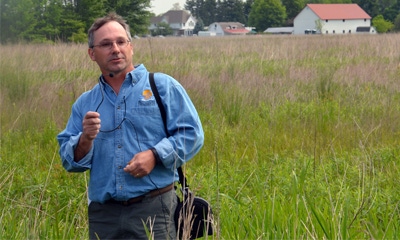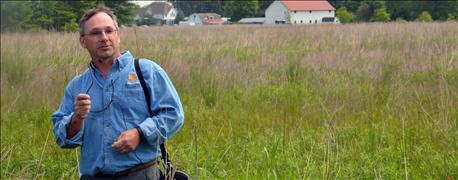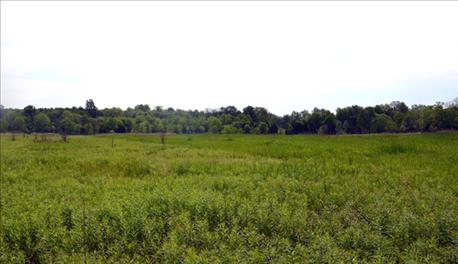
If you see smoke rising over acres planted to grass in the Conservation Reserve Program, especially in later fall through early spring, odds are there is no fire out of control. It was likely lit on purpose to burn off the area so it can regrow again.
Nathan Yazel is a wildlife biologist with the Indiana Department of Natural Resources. He says burning off existing top growth is a midcontract practice useful on many CRP acres. Most of these contracts are long-term, often covering 10 to 15 years. Some maintenance is often required about halfway through the contract to preserve or improve the value of the CRP land.

BETTER FOR QUAIL: Nathan Yazel says one reason to burn off Conservation Reserve Program acres is to give young quail and other birds a better chance to move through the field without getting hung up in past grass residue.
“One reason for burning off old grass is to remove the thatch on the floor of the field,” Yazel says. He recently became the biologist serving southeast Indiana. “The undergrowth can become so thick that young birds, like quail, have a hard time getting through it. If you burn off the field, it removes that thatch underneath and makes it much easier for younger, smaller birds to navigate their way through the field.”
Mixed blessing
Bob Mulford has a farm just south of Versailles and has converted the entire acreage to CRP land to foster the return of birds and wildlife. He typically burns off fields of grasses in rotation, not burning everything in one year. He prefers to burn in the fall when he can. However, sometimes he has to wait until late February or even early spring to get a window where he can burn. not burning everything in one year. He prefers to burn in the fall when he can. However, sometimes he has to wait until late February or even early spring to get a window where he can burn.

BURN REDUCES DIVERSITY: Bob Mulford conducts burns of his CRP wildlife acres, but he realizes it reduces diversity. The field on the right was burned this spring. The field on the left was not burned.
“I know it’s necessary, and it really helps birds like quail,” Mulford says. “One of our objectives is to help increase the quail population here.
“One thing I don’t like is that burning off this type of land decreases diversity,” he says. “But we do it because we want to do what is best for wildlife.
“I am a fan of diversity, and we have lots of it on the farm. But I also want to help protect and bring back more quail to the area. So we have to do what helps them as well,” Mulford says.
Management technique
One thing burning of established CRP land can do is help prevent grasses from choking out desirable broadleaf plants over time, Yazel says. Wildlife enthusiasts usually refer to these broadleaf plants in a group as forbs.
“If you aren’t careful, the warm-season, big-stemmed grasses can take over and crowd out forbs,” Yazel says. “It takes some sort of disturbance to knock them back and keep them from dominating the area.”
One other additional practice which can help is strip disking. Mulford uses it as well. The idea is to disk strips through the field to open up the area, so young grasses can pop up once the original area is disturbed.
About the Author(s)
You May Also Like




